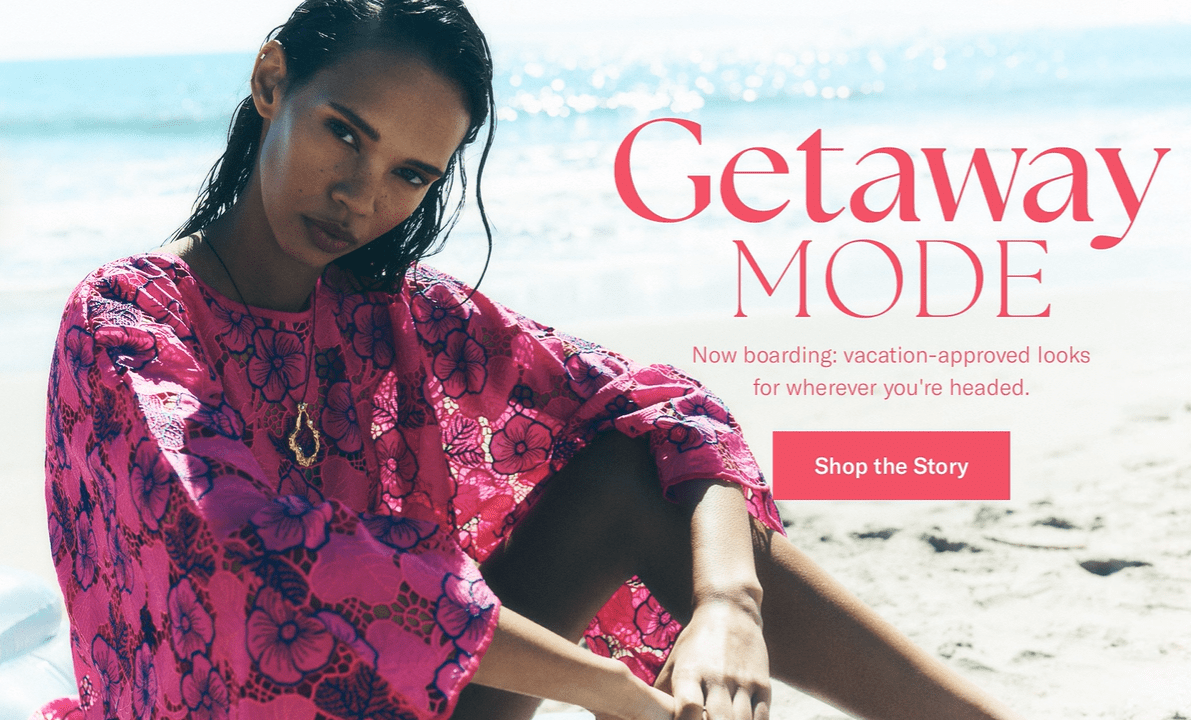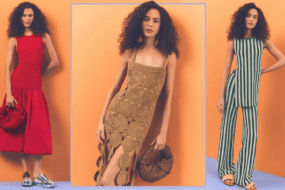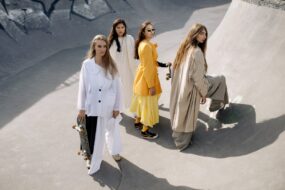
In recent years, the fashion industry has experienced a dramatic shift in how styles are defined, marketed, and consumed. Traditionally, streetwear and high fashion existed as separate, often opposing, realms of style. Streetwear, with its roots in urban culture and youth movements, was considered casual, rebellious, and sometimes anti-establishment. High fashion, on the other hand, represented luxury, sophistication, and exclusivity, often reserved for the elite and curated in high-end boutiques.
However, these once-clear boundaries between streetwear and high fashion have begun to blur, creating an entirely new fashion landscape. The influence of streetwear has penetrated the runways, with established luxury brands adopting elements of this genre. Meanwhile, streetwear brands are embracing high-end craftsmanship and collaboration with prestigious designers, creating a symbiotic relationship between the two. This convergence has resulted in a hybrid fashion culture, one that emphasizes accessibility, individuality, and cultural influence over traditional notions of class and exclusivity.
The Rise of Streetwear
Streetwear, as a distinct fashion movement, traces its origins to the 1980s in urban centers like New York, Los Angeles, and Tokyo. It was a product of skateboard, hip-hop, and punk cultures, where clothing was an expression of identity, rebellion, and social status. Early streetwear brands like Supreme, Stüssy, and A Bathing Ape (BAPE) emerged as symbols of counterculture, appealing to a youthful audience that valued authenticity, exclusivity, and cultural relevance over conventional fashion norms.
In the early 2000s, streetwear became associated with high-demand collaborations, often creating limited-edition releases that were sold out almost immediately. The resale market for these items grew exponentially, turning streetwear into a lucrative industry. Despite its commercial success, the ethos of streetwear remained rooted in the streets, where self-expression and subcultural affiliations were paramount.
Streetwear’s influence continued to expand throughout the decade, thanks in part to the growing prominence of hip-hop culture and the emergence of celebrities who were seen sporting streetwear brands. Artists like Kanye West, Pharrell Williams, and A$AP Rocky not only wore streetwear but also helped shape its direction through collaborations with top brands and the creation of their own clothing lines. Kanye’s Yeezy collection, for example, blended high fashion aesthetics with streetwear sensibilities, elevating the genre to a level of prominence it had never previously seen.
High Fashion and Its Traditional Roots
High fashion, or haute couture, has always been about luxury, craftsmanship, and exclusivity. It’s a world of finely tailored suits, intricate evening gowns, and garments that often carry multi-thousand-dollar price tags. The designers who control this space, such as Chanel, Louis Vuitton, and Gucci, have historically defined the cutting-edge of fashion, dictating trends and setting the standards for taste and style.
The exclusivity of high fashion was one of its defining features. The collections presented at Fashion Week were meant for an elite clientele: celebrities, socialites, and other members of the upper class. Even access to high fashion was often gated by income, status, and privilege, and the garments themselves were created with the finest materials and the most skilled artisanship.
However, this traditional definition of high fashion began to evolve as younger, more diverse designers emerged, bringing new influences and ideas to the table. Brands like Off-White, Balenciaga, and Vetements played a pivotal role in redefining what it meant to be a luxury brand. These designers fused high fashion with elements from street culture, grunge, and even sportswear, creating collections that challenged the traditional notions of couture while retaining the craftsmanship and exclusivity associated with luxury fashion.
The Convergence of Streetwear and High Fashion
The convergence of streetwear and high fashion began to accelerate in the 2010s, as the lines between the two worlds became increasingly indistinct. Designers who had traditionally worked in high fashion began to embrace streetwear elements, and vice versa. The catalyst for this fusion was not just cultural shifts, but also the changing nature of fashion consumption itself.
Social media and digital platforms have made fashion more accessible to a wider audience. The rise of Instagram, TikTok, and YouTube has democratized the fashion conversation, allowing influencers, celebrities, and everyday individuals to shape trends and influence brands. This shift meant that designers could no longer rely solely on the elite class to sustain their businesses; they had to appeal to a global, younger, and more diverse demographic that valued streetwear and the authenticity it represented.
One of the earliest signs of the merger between streetwear and high fashion was the collaboration between the streetwear brand Supreme and Louis Vuitton in 2017. This partnership was groundbreaking, as it united a luxury brand with a subculture that had been largely excluded from high fashion. The collection, which included items like branded skateboards, hoodies, and sneakers, was emblematic of the shift in consumer preferences. It also demonstrated that high-end labels could tap into streetwear’s massive following without sacrificing their prestige.
Following that collaboration, other high fashion houses began experimenting with streetwear-inspired elements. Virgil Abloh, the founder of Off-White, became the artistic director of Louis Vuitton’s men’s division in 2018, further bridging the gap between the two worlds. Abloh, who had started his career in streetwear and as a collaborator with Kanye West, brought a distinctly streetwise approach to Louis Vuitton’s designs, mixing luxury materials with urban-inspired aesthetics.
Meanwhile, streetwear brands have also evolved, introducing new levels of craftsmanship and attention to detail. Supreme, for example, has worked with the finest manufacturers to create premium versions of its signature pieces. Brands like A$AP Rocky’s AWGE and Travis Scott’s Cactus Jack have shown that streetwear can coexist with the highest levels of artistic expression and technical design.
The Role of Sneakers in Blurring the Lines
Sneakers have played a pivotal role in the convergence of streetwear and high fashion. Originally, sneakers were rooted in athletic and casual wear, but over the past two decades, they’ve evolved into a key symbol of luxury and status. High-end designers and streetwear brands alike have recognized the cultural cachet of sneakers, leading to a flurry of collaborations between sneaker brands and luxury fashion houses.
Nike, Adidas, and Puma have all teamed up with high-fashion designers to create limited-edition sneakers that blend performance with aesthetics. The collaboration between Adidas and Kanye West’s Yeezy line, for instance, has been immensely popular, both in streetwear circles and among luxury shoppers. Similarly, Louis Vuitton’s collaboration with Nike, which resulted in the iconic Louis Vuitton x Nike Air Force 1 collection, is another example of how sneakers have become a bridge between the two fashion worlds.
The sneaker resale market has also seen an explosion in value, with rare models fetching tens of thousands of dollars. This has led to an entire subculture of sneakerheads, people who collect and trade sneakers as a form of both fashion expression and investment. The rise of resale platforms like StockX and Stadium Goods has further legitimized sneakers as high-fashion items, making them as valuable as any haute couture piece.
The Influence of Celebrities and Influencers
Celebrities and influencers have been instrumental in blurring the lines between streetwear and high fashion. High-profile figures such as Kanye West, Rihanna, and Pharrell Williams have used their platforms to promote both streetwear and luxury fashion, making the two realms more interchangeable. Their ability to influence trends through social media and public appearances has had a profound impact on the fashion industry as a whole.
For example, Kanye West’s Yeezy brand has not only become a major force in streetwear but also a respected name in high fashion, thanks to its minimalist, avant-garde design ethos. His collaborations with Adidas have become a mainstay in both streetwear and luxury fashion, and the line is often seen as a high-end alternative to traditional sneaker culture.
Similarly, Rihanna’s Fenty brand, which was launched in collaboration with LVMH, blurred the lines between luxury and streetwear by incorporating street-inspired designs into its couture offerings. Rihanna’s celebrity status, combined with her personal style and musical influence, made Fenty a sensation in both high fashion and streetwear communities.
The democratization of fashion through social media has also allowed everyday influencers to impact trends in significant ways. Instagram influencers, TikTok stars, and YouTubers have become powerful trendsetters, curating streetwear looks that often incorporate elements of high fashion. As a result, young consumers now have direct access to both worlds, shaping trends and blurring the lines further.
The Future of Fashion: Where Do We Go from Here?
As streetwear and high fashion continue to merge, it’s clear that the traditional distinctions between the two are becoming increasingly irrelevant. The future of fashion seems to lie in the celebration of individuality and self-expression, rather than the adherence to specific categories or labels.
One potential future direction is the continued rise of “luxury streetwear,” where brands that once focused solely on streetwear are increasingly incorporating elements of high fashion. This could lead to a greater emphasis on craftsmanship, with streetwear brands investing more in materials and design techniques traditionally associated with luxury fashion.
Alternatively, high fashion could continue to adopt the ethos of streetwear, embracing inclusivity, accessibility, and cultural relevance. As the fashion industry becomes more globalized and interconnected, it’s likely that we’ll see even more collaborations between streetwear and high fashion, pushing the boundaries of what luxury fashion can be.
Ultimately, the blurring of lines between streetwear and high fashion represents a shift in the way we understand style. It is no longer about adhering to rigid categories but about celebrating the fluidity of fashion and the ability to move between different worlds. The rise of streetwear’s influence on high fashion has democratized the industry, bringing new voices and fresh perspectives to the forefront. Whether through sneakers, celebrity influence, or collaborations, the fusion of streetwear and high fashion is not just a trend, but a reflection of the cultural shifts that continue to shape the world of fashion.






















